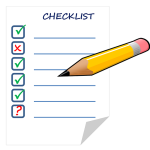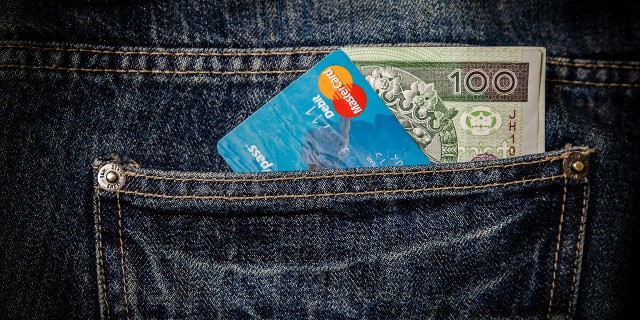SEO is a two-pronged strategy, involving on-page and off-page SEO. Once you’ve optimized your website’s on-page SEO, you need to take care of off-page SEO.

When there was no such thing as Panda, Penguin, Hummingbird, or various Core updates by Google, off-page SEO primarily involved creating as many backlinks as possible. Off-page SEO involved directory submissions, bookmarking, article submissions, blog submissions, profile links, and lots of links (mostly, irrelevant) from various sources.

Way back in 2015 (Panda update), all websites with duplicated, scrap, and thin content or doorway pages were pushed down in search results, making room for high-quality sites for the top ranking positions.
Google is continuously improving its core algorithm that is responsible for ranking websites in search results.
Modern SEO requires a technical, creative, and strategic thinking approach with proper off-page SEO factors.
Off-Page SEO Checklist
Investing in your site’s off-page can pay off with higher rankings on the search engines. Here is an off-page SEO checklist to keep you on the right path to higher online visibility in Google & other search engines.
Initial Checks
1. Check the Google Webmaster tool to determine whether the site has manual actions or not.
2. If yes, then find out why the site got a penalty and work on revoking the manual actions.
3. Open your site explorer or site auditing tool, such as Ahrefs and Cognitive SEO, to monitor your current link profile. Look for the following points:
- Number of backlinks
- Anchor texts used in backlinks or anchor text cloud in Ahrefs
- Parameters of sites where outbound links are coming. Check for:
- Relevancy to your business
- Authority (DA, Citation Flow, Trust Flow)
- Popularity (Alexa Rank)
- Content updation on site (Blog, Resource, Case Study, Portfolio)
If a website is irrelevant, low authority, and unpopular with few content updates, then ask to remove such link. Disavow them if they’re not removed by the webmaster. There are many other ways to keep monitoring your link profile, but make sure it becomes a regular habit to watch for negative SEO by competitors.
4. Does the business have all its offices marked on Google My Business? Take the client’s Help!
5. Ask clients is they’re associated with industry associations and federations websites. If yes, then request to receive a link from their site.
6. If clients speak publicly in events or sponsor events, don’t miss the opportunity to gain links and boost your search engine ranking success.
7. When clients have a global business, get a link from the group website for a targeted version of your website.
Local SEO

8. Have Google, Bing, Facebook, and Apple Places listings been added using your local address. If not, then start adding this immediately.
9. Make certain you fill out the complete profile of your local places listings. While filling in your company’s description, don’t forget add rich, relevant keywords.
10. Include your website in all high-quality, popular local business directories and citation websites as well. Have a look at this dentist SEO guide to learn more hot tips for local off-page SEO.
General Checks

11. What SEO Link building strategy do you follow?
- Broken Link Building
- Resource Links
- Skyscraper Technique
- Natural Guest Blogging
- Find Competitors’ Common Backlinks
- Dead Backlink Recovery
- Infographic Outreach
- Turn Mentions into Backlinks
- Create Lists
- Product Outreach
- Give Cool Materials
12. Find link bait content on your website in the form of a blogs, resources, case studies, etc.
13. Use the link bait content in your SEO link building strategy. Share it on relevant social media platforms and through email campaigns.
14. Use recent blog posts, resource links, or call-to-actions in your email signature.

eCommerce SEO
15. Use product outreach to gain high-quality links. Get your products reviewed, enlist bloggers to create hype, and throw some enticing giveaways.
16. Target categories instead of specific landing pages through the use of co-citation and co-occurrence.
17. Gain the benefit of links from news outlets and high PR websites for debuting exclusive product launches on your eCommerce site.
Anchor Text Ratio
18. Anchor text clouds shouldn’t contain exact match anchor text more than 1 percent.
19. Branded anchor texts should be at 40 percent.
20. The rest of the anchor text should be diluted, mixed, and naked or direct.
Backlinks to Avoid
Take the step to eliminate the following types of bad links:
21. Site-wide link from a client site
22. Link from an irrelevant source
23. Link from a profile that was never managed or updated
24. Signature link in a forum (This doesn’t mean a link from a forum is bad. If you add it in the body and it’s helpful to users, then it’ll get you a good amount of traffic)
25. Low-quality directory sites
26. Low-quality bookmarking sites
27. Free article directories and blog sites
28. Too many links from an unauthoritative site
Conclusion
Off-page SEO isn’t simple nowadays after Google has gifted us with several algorithm changes and updates. You need to take care of your website and use proper SEO. Otherwise, your website can become affected by negative SEO or be delivered a manual action.
Wrong practices can cost your business plenty of dollar signs. Things are getting tougher in SEO, but that doesn’t mean it’s not possible to keep your site healthy. All you need is to follow the right off-page SEO practices above that will take your business to new heights on the World Wide Web.
